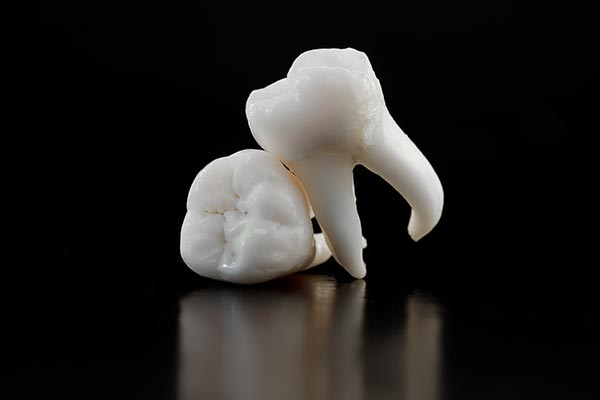Why may a tooth need to be extracted?
If a tooth is in an undesirable position, injured, or damaged from improper care, a general dentist may not be able to move into the proper spot or treat the compromised tooth.
Tooth decay
While a root canal can be used to address tooth decay that has reached the center of a tooth, if the pulp is severely infected, this procedure may no longer be a viable option. In some situations, the infection may even put the individual at risk if not removed from the mouth quickly.
Periodontal disease
Periodontal disease occurs when a patient’s gums become infected and inflamed. This problem is caused by bacteria present in plaque, which can spread to the ligaments and bones within the gums as well. Over time, deterioration of the gum tissue and surrounding structures can loosen the teeth until there is no firm foundation, leading to the tooth falling out on its own or needing to be extracted.
Impacted teeth
Teeth that are unable to erupt due to being in an undesirable position or blocked by other teeth can be problematic. In some cases, the adult teeth coming in can hit and damage other teeth that have already come through the gums. If orthodontics cannot guide the impacted teeth, a surgical extraction can remove the tooth before it causes further issues.
Overcrowding
Sometimes teeth become crowded together if the jaw is too small to accommodate all the teeth. While aligners or braces can often be used to better space out the teeth and even open the jaw, this solution is not always possible. The dentist may recommend extracting a tooth to create more space.
Dental trauma
Small cracks and chips can often be fixed with a dental crown, veneers, or dental bonding, but more extensive damage can result in the loss of a tooth. If a large chunk of the tooth comes off, the crack extends to the root of the tooth, or the tooth is dislodged completely, it may not be possible to save it.
What comes after a tooth extraction?
After a tooth is extracted from the mouth, there are several solutions that may be recommended to fill in the space left behind. Dental restorations, such as implants, bridges, or dentures, may be used to replace the tooth, making it look and function similarly to a natural tooth. Orthodontics may also help close spaces.
Conclusion
Tooth extractions are a common solution recommended by a general dentist when other options for saving the tooth have run out. Fortunately, there are several restorative treatments patients can consider to preserve their smiles.
or call Coal City Dental at 815-634-6046 for an appointment in our Coal City office.
Related Posts
Among the most common dental problems that a general dentist treats are cavities. Most people will experience this form of tooth decay at some point due to:Dry mouthSugary foods and drinksPoor oral hygieneGeneticsThere are several types of cavities, and each can lead to complications without prompt treatment.A general dentist first considers a cavity's location when…
An appointment with a general dentist provides many benefits beyond cleaning the teeth. Oral hygiene is important to help maintain functions like chewing, swallowing, or speaking, but there is also a link between an individual’s overall health and oral health. Routine dental exams support good personal health.The body is a complex system of many parts…
Persistent oral pain or extensive decay may send a patient to a general dentist, who must then advise whether the patient should try to save the tooth or have it pulled. To save the tooth, a root canal procedure may be necessary. This involves removing the infected pulp of the tooth and replacing it with…
